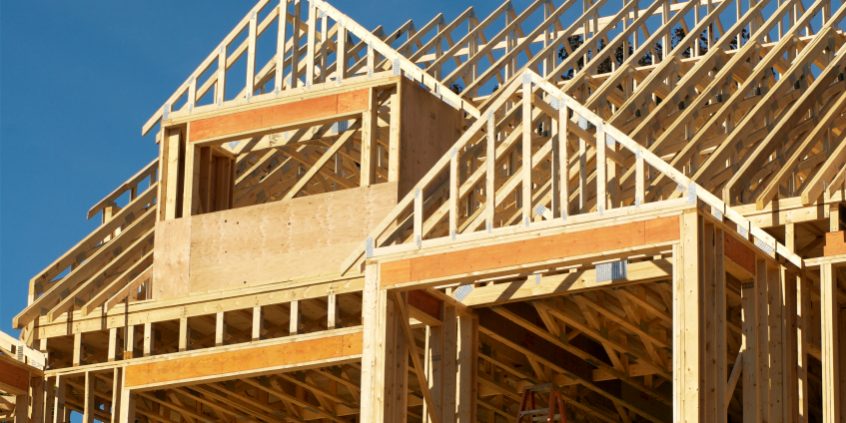
Construction firms are reeling from snowballing costs of building materials due to spiking demand and supply chain snarls that are resulting in massive budget cost overruns.
This is especially affecting construction businesses that are managing apartment or commercial projects. These cost overruns are imperiling profits — and risking red ink — on the projects after the contractors won carefully constructed bids.
Building materials and labor costs are going through the roof. According to the U.S. Census Bureau, construction costs spiked 17.5% year-over-year from 2020 to 2021, the largest increase in this data from year to year since 1970. And 2021’s costs were more than 23% higher than pre-COVID-19 pandemic 2019.
Many of the materials used in the construction of apartment and commercial buildings, including concrete, flat glass and steel products, are affected by volatile prices, with steel seeing a more than 123% increase in costs in the past year.
On top of that, labor costs have also risen due to a skilled labor shortage in the construction industry.
The fallout
With the prices of materials climbing rapidly, it’s easy for project costs to quickly exceed expectations and sink a project if those costs break the profit margin and force a loss.
To avoid this fate, construction firms need to be proactive and put in place procedures for dealing with materials cost increases, supply chain disruptions and a shortage of capable manpower. It could mean the difference between turning a modest profit or losing their shirt.
There are steps that contractors can take to avoid that fate. In an article on the website Construction Dive, Ripley Bickerstaff related what Hoar Construction, where he works as director of business development in Nashville, is doing to reduce the risks of price shocks and materials shortages so that builders can keep projects on track and in the black.
Verify materials
Bickerstaff recommends that for large orders, like 700 bathroom washbasins or 500 kitchen countertops, the orders are visually verified in person before they ship. That way, the builder can make sure that all of the items are built to specifications and that they aren’t faulty.
Inspecting orders well in advance of shipment can reduce the chance of faulty or improperly sized items and having to reorder new product. With the woeful state of supply chains, that could mean having to wait months for a replacement order.
Bickerstaff said that Hoar Construction, during a recent project for a 500-unit project, sent its employees to warehouses locally and in far-flung regions to verify various materials, including “light fixtures, flooring materials and drapes in Atlanta, countertops and balcony railings in Florida and balcony doors in Tennessee.”
“You have to walk in and actually make sure supplies work for the job and then have face-to-face conversations with production teams to ensure adjustments can be made in real time,” he wrote.
Don’t delay
Bickerstaff also recommends ordering items as early as possible, not just when needed. Due to supply chain issues, some items require a year lead time from order to delivery.
This way, you can lock in the price ahead of time. Even if it’s an item you’ll need for later in the project, considering the rapid pace of price increases, it’s best to order in advance so you avoid being hit with higher prices later. This can protect your profit margin.
Additionally, the general contractor should work with architects and designers of the project to identify which materials they should order and which ones make sense in the current cost environment. This can also give the builder time to shop around and find deals on similar or comparable items made of different materials to save money.
Contractors that order materials early will have to arrange for storage as well. So securing warehouse space should be a priority.
Secure your workforce, subs early
With demand for construction workers and contractors exceeding supply, general contractors have to get in line and book them early.
For example, in some markets, electrical contractors are booking projects as far as a year out. Builders should secure subcontractors in advance to give them time to book their crews and order the materials they’ll need.
“Many builders are now shooting to lock in 70% of costs prior to construction documents, which should minimize the chances of double-digit material price hikes after a developer closes their loan,” Bickerstaff writes.
The takeaway
Working on a large construction project now requires greater foresight and planning. You’ll need to price in factors you normally may not consider to ensure that you can meet your project budget and turn a profit.


